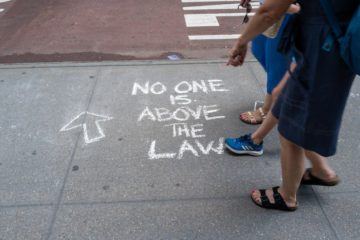 The more we learn about the FBI’s search of Mar-a-Lago, the sillier — and more sinister — the overcaffeinated Republican defenses of former president Donald Trump look. A genius-level spinmeister, Trump set the tone with a Monday evening statement announcing: “These are dark times for our Nation, as my beautiful home, Mar-A-Lago in Palm Beach, Florida, is currently under siege, raided, and occupied by a large group of FBI agents. Nothing like this has ever happened to a President of the United States before.” That description allowed his followers to imagine a scene straight out of a Hollywood action picture, with agents in FBI jackets busting down the doors and holding the former president and first lady at gunpoint while they ransacked the premises. Although Trump’s team had a copy of the search warrant, he gave no hint of why the FBI might have been there, claiming, “It is … an attack by Radical Left Democrats who desperately don’t want me to run for President in 2024.”
The more we learn about the FBI’s search of Mar-a-Lago, the sillier — and more sinister — the overcaffeinated Republican defenses of former president Donald Trump look. A genius-level spinmeister, Trump set the tone with a Monday evening statement announcing: “These are dark times for our Nation, as my beautiful home, Mar-A-Lago in Palm Beach, Florida, is currently under siege, raided, and occupied by a large group of FBI agents. Nothing like this has ever happened to a President of the United States before.” That description allowed his followers to imagine a scene straight out of a Hollywood action picture, with agents in FBI jackets busting down the doors and holding the former president and first lady at gunpoint while they ransacked the premises. Although Trump’s team had a copy of the search warrant, he gave no hint of why the FBI might have been there, claiming, “It is … an attack by Radical Left Democrats who desperately don’t want me to run for President in 2024.”
His followers — which means pretty much the whole of the Republican Party — took up the cry based on no more information than that. Fox News host Mark Levin called the search “the worst attack on this republic in modern history, period.” Sen. Ted Cruz (R-Tex.) called it “corrupt & an abuse of power.” Sen. Rick Scott (R-Fla.) compared the FBI to “the Gestapo.” Not to be outdone, former House speaker Newt Gingrich (R-Whackadoodle) said the FBI was the “American Stasi,” and compared its agents to wolves “who want to eat you.” “Today is war,” declared Steven Crowder, a podcaster with a YouTube audience of 5.6 million people. Rep. Marjorie Taylor Greene (R-Ga.) tweeted “DEFUND THE FBI!” Former Trump aide Stephen K. Bannon, among many others, suggested that the FBI and the Justice Department (“essentially lawless criminal organizations”) might have planted evidence.
…The New York Times, meanwhile, reported that the search was conducted by FBI agents “intentionally not wearing the blue wind breakers emblazoned with the agency’s logo usually worn during searches.” The club was closed, and Trump was not there. He was in New York, where he would plead the Fifth Amendment against self-incrimination more than 400 times during a deposition with the New York attorney general. But according to Trump’s lawyer, Trump and his family were able to watch the entire search on Mar-a-Lago’s closed-circuit security cameras. So much for the crackpot claim that the FBI could have planted evidence!
More here.
 Last year, the particle physicist Lance Dixon was preparing a lecture when he noticed a striking similarity between two formulas that he planned to include in his slides.
Last year, the particle physicist Lance Dixon was preparing a lecture when he noticed a striking similarity between two formulas that he planned to include in his slides.
 Cities that are attacked by nuclear missiles burn at such an intensity that they create their own wind system, a firestorm: hot air above the burning city ascends and is replaced by air that rushes in from all directions. The storm-force winds fan the flames and create immense heat.
Cities that are attacked by nuclear missiles burn at such an intensity that they create their own wind system, a firestorm: hot air above the burning city ascends and is replaced by air that rushes in from all directions. The storm-force winds fan the flames and create immense heat. The attack on Rushdie is a wake-up call for all of us who have a stake in free expression, which is all of us, period. While we do not yet know the motives of his attackers, it is hard to envisage a scenario in which this brazen, premeditated attack, the first in memory targeting a writer at a literary event in the United States, had nothing to do with Rushdie’s words and ideas.
The attack on Rushdie is a wake-up call for all of us who have a stake in free expression, which is all of us, period. While we do not yet know the motives of his attackers, it is hard to envisage a scenario in which this brazen, premeditated attack, the first in memory targeting a writer at a literary event in the United States, had nothing to do with Rushdie’s words and ideas.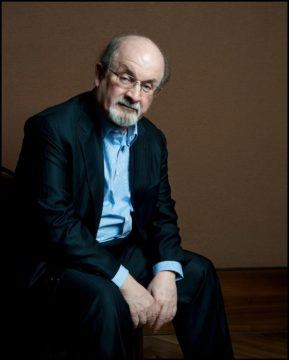 The terrorist assault on Salman Rushdie on Friday morning, in western New York, was triply horrific to contemplate. First in its sheer brutality and cruelty, on a seventy-five-year-old man, unprotected and about to speak—doubtless cheerfully and eloquently, as he always did—repeatedly in the stomach and neck and face. Indeed, we accept the abstraction of those words—“assaulted” and “attacked”—too casually. To try to feel the victim’s feelings—first shock, then unimaginable pain, then the panicked sense of life bleeding away—to engage in the most moderate empathy with the author is to be oneself scarred. (At the time of writing, Rushdie is reportedly on a ventilator, with an uncertain future, the only certainty being that, if he lives, he will be maimed for life.)
The terrorist assault on Salman Rushdie on Friday morning, in western New York, was triply horrific to contemplate. First in its sheer brutality and cruelty, on a seventy-five-year-old man, unprotected and about to speak—doubtless cheerfully and eloquently, as he always did—repeatedly in the stomach and neck and face. Indeed, we accept the abstraction of those words—“assaulted” and “attacked”—too casually. To try to feel the victim’s feelings—first shock, then unimaginable pain, then the panicked sense of life bleeding away—to engage in the most moderate empathy with the author is to be oneself scarred. (At the time of writing, Rushdie is reportedly on a ventilator, with an uncertain future, the only certainty being that, if he lives, he will be maimed for life.) One of the stranger sights on the University College London campus is the clothed skeleton of the utilitarian philosopher Jeremy Bentham. Stranger still is that a waxwork head sits on its shoulders, where Bentham’s own head should be, as per his will. Meanwhile, his preserved head is elsewhere – his friends thought it looked too grotesque for display, and commissioned the waxwork one instead. Legend has it that Bentham’s real head was stolen by some students from King’s College London as a prank against their University College rivals, and a ransom demanded for returning it. Apparently, this was eventually paid up, and the head was returned.
One of the stranger sights on the University College London campus is the clothed skeleton of the utilitarian philosopher Jeremy Bentham. Stranger still is that a waxwork head sits on its shoulders, where Bentham’s own head should be, as per his will. Meanwhile, his preserved head is elsewhere – his friends thought it looked too grotesque for display, and commissioned the waxwork one instead. Legend has it that Bentham’s real head was stolen by some students from King’s College London as a prank against their University College rivals, and a ransom demanded for returning it. Apparently, this was eventually paid up, and the head was returned.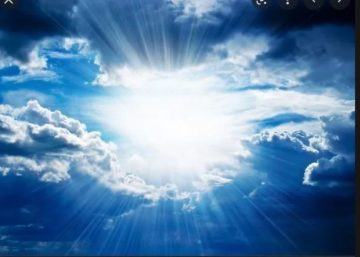 Branko Milanovic over at his substack Global Inequality and More 3.0:
Branko Milanovic over at his substack Global Inequality and More 3.0: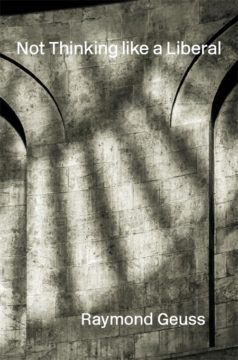 Terry Eagleton in Sidecar [h/t: Leonard Benardo]:
Terry Eagleton in Sidecar [h/t: Leonard Benardo]: Gregg studies animal behavior and is an expert in dolphin communication. He shows how human cognition is extraordinarily complex, allowing us to paint pictures and write symphonies. We can share ideas with one another so that we don’t have to rely only on gut instinct or direct experience in order to learn. But this compulsion to learn can be superfluous, he says. We accumulate what the philosopher Ruth Garrett Millikan calls “dead facts” — knowledge about the world that is useless for daily living, like the distance to the moon, or what happened in the latest episode of “Succession.” Our collections of dead facts, Gregg writes, “help us to imagine an infinite number of solutions to whatever problems we encounter — for good or ill.”
Gregg studies animal behavior and is an expert in dolphin communication. He shows how human cognition is extraordinarily complex, allowing us to paint pictures and write symphonies. We can share ideas with one another so that we don’t have to rely only on gut instinct or direct experience in order to learn. But this compulsion to learn can be superfluous, he says. We accumulate what the philosopher Ruth Garrett Millikan calls “dead facts” — knowledge about the world that is useless for daily living, like the distance to the moon, or what happened in the latest episode of “Succession.” Our collections of dead facts, Gregg writes, “help us to imagine an infinite number of solutions to whatever problems we encounter — for good or ill.” The more we learn about the FBI’s search of Mar-a-Lago, the sillier — and more sinister — the overcaffeinated Republican defenses of former president Donald Trump look. A genius-level spinmeister, Trump set the tone with a
The more we learn about the FBI’s search of Mar-a-Lago, the sillier — and more sinister — the overcaffeinated Republican defenses of former president Donald Trump look. A genius-level spinmeister, Trump set the tone with a  R
R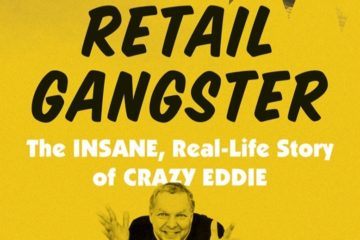 The most famous TV ad in the Orwellian year of 1984, carefully themed to the novel named for this year, was for the
The most famous TV ad in the Orwellian year of 1984, carefully themed to the novel named for this year, was for the 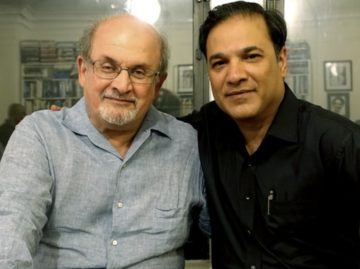 For most of us,
For most of us, 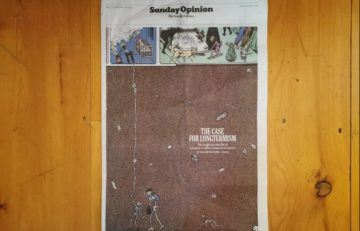 Effective altruism—EA for short—is a pretty straightforward extension of utilitarian moral philosophy and drew much of its founding inspiration from the most famous living utilitarian philosopher, Peter Singer. The basic idea is that you should maximize the amount of increased human welfare per dollar of philanthropic donation or per hour of charitable work. A classic EA expenditure is on mosquito nets: You can actually count the lives you’re theoretically saving from the ravages of malaria and compare that with the number of lives you could have saved by, say, funding a water purification project.
Effective altruism—EA for short—is a pretty straightforward extension of utilitarian moral philosophy and drew much of its founding inspiration from the most famous living utilitarian philosopher, Peter Singer. The basic idea is that you should maximize the amount of increased human welfare per dollar of philanthropic donation or per hour of charitable work. A classic EA expenditure is on mosquito nets: You can actually count the lives you’re theoretically saving from the ravages of malaria and compare that with the number of lives you could have saved by, say, funding a water purification project. The foreground of the most looked-at painting in the museum is partly taken up by a painting seen from the back. Everything in Las Meninas seems overt and at the same time is deceptive. The mystery of what may or may not be painted on the canvas is counterpoised by the concrete evidence of its reverse, and along with it, by the irreducible material nature of the art of painting, emphasized by the scale of that enormous object made of stiff, rough cloth and wooden bars locked together firmly enough for the contraption to stand upright. Velázquez devotes as much attention to those carefully cut pieces of wood—their knots, their volume, the way the light shows them in relief, the rough texture of the cloth—as to the blond, dazzled hair of the infanta or to the butterfly, perhaps of silver filigree, that the maid María Agustina Sarmiento wears in her hair, as distinct as a piece of jewelry when seen from a distance, though it dissolves into small abstract patches of color when seen up close. Velázquez had “brushes . . . furnished with long handles,” says Palomino, “which he employed sometimes to paint from a greater distance and more boldly, so it all seemed meaningless from up close, and proved a miracle from afar.”
The foreground of the most looked-at painting in the museum is partly taken up by a painting seen from the back. Everything in Las Meninas seems overt and at the same time is deceptive. The mystery of what may or may not be painted on the canvas is counterpoised by the concrete evidence of its reverse, and along with it, by the irreducible material nature of the art of painting, emphasized by the scale of that enormous object made of stiff, rough cloth and wooden bars locked together firmly enough for the contraption to stand upright. Velázquez devotes as much attention to those carefully cut pieces of wood—their knots, their volume, the way the light shows them in relief, the rough texture of the cloth—as to the blond, dazzled hair of the infanta or to the butterfly, perhaps of silver filigree, that the maid María Agustina Sarmiento wears in her hair, as distinct as a piece of jewelry when seen from a distance, though it dissolves into small abstract patches of color when seen up close. Velázquez had “brushes . . . furnished with long handles,” says Palomino, “which he employed sometimes to paint from a greater distance and more boldly, so it all seemed meaningless from up close, and proved a miracle from afar.”